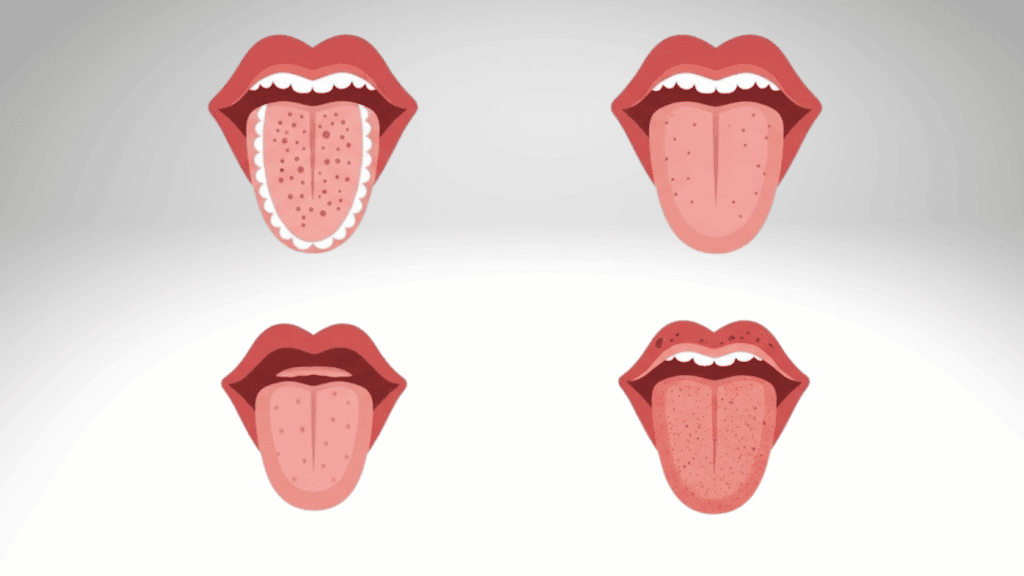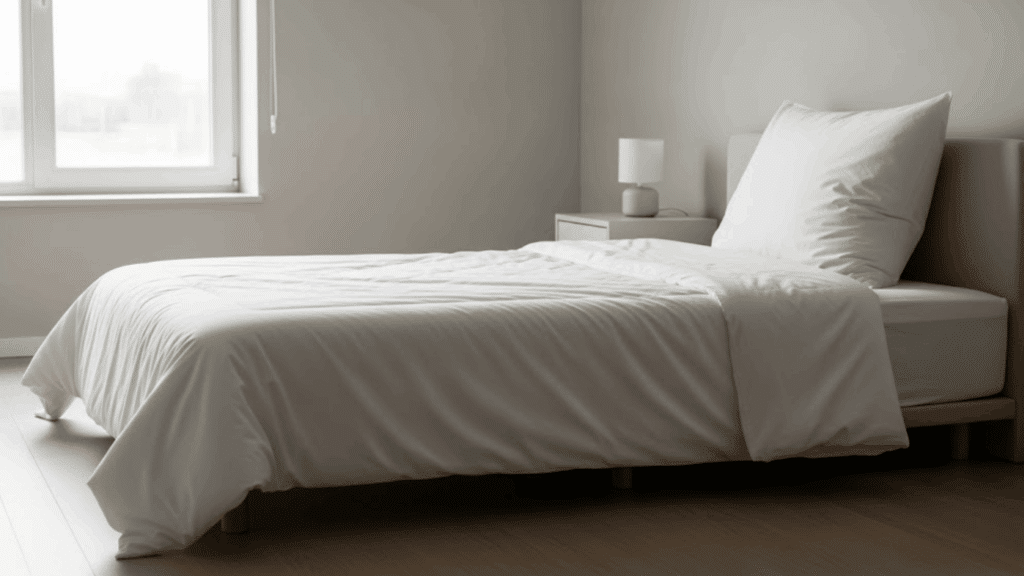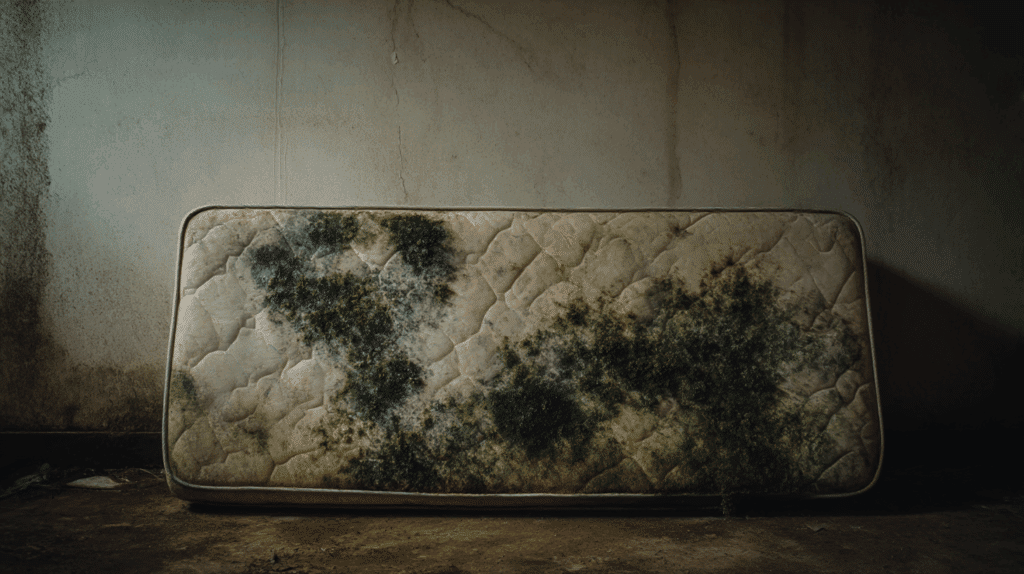Sleep apnea is a common condition that causes pauses in breathing during sleep, often without the person even realizing it.
One of the easiest places to spot early warning signs is inside the mouth, especially on the tongue. Dentists and sleep specialists often notice changes in the tongue that may point to airway problems at night.
A scalloped tongue with ridges along the edges, swelling, or an unusually large tongue is a key clue linked to sleep apnea.
Other oral signs, like tooth grinding, dry mouth, or a narrow palate, can also increase the risk. Paying attention to these dental and tongue signs is important because they can signal a need for further testing and treatment.
Early recognition helps prevent serious health issues and improves sleep quality.
What Are Tongue Signs of Sleep Apnea?
Sleep Apnea Tongue signs are physical changes on the tongue that may indicate a higher risk of airway blockage during sleep.
Since the tongue is one of the main structures that can collapse and block airflow at night, it often shows clues when sleep apnea is present.
One of the most noticeable tongue signs of sleep apnea is scalloping, where the sides of the tongue develop wavy or ridged edges from pressing against the teeth.
In some cases, the tongue may look puffy, take up too much space in the mouth, or show unusual surface changes. While these tongue signs don’t diagnose sleep apnea on their own, they are strong warning signals.
Dentists and doctors use them to determine whether a sleep study or further testing is necessary.
Important Tongue Signs That May Indicate Sleep Apnea
The tongue can reveal some of the earliest signs of sleep apnea. Changes in its appearance or structure often suggest airway problems during sleep.
Below are the most common tongue-related clues that dentists and doctors look for when identifying possible cases of sleep apnea.
1. Scalloped Tongue (Crenated Edges)

A scalloped tongue has wavy or ridged marks along the sides. These impressions are usually caused by the tongue pressing against the teeth during sleep.
This happens when the tongue is too large for the mouth or shifts backward, blocking the airway. Scalloping is one of the most noticeable tongue signs of sleep apnea.
2. Enlarged or Swollen Tongue (Macroglossia)
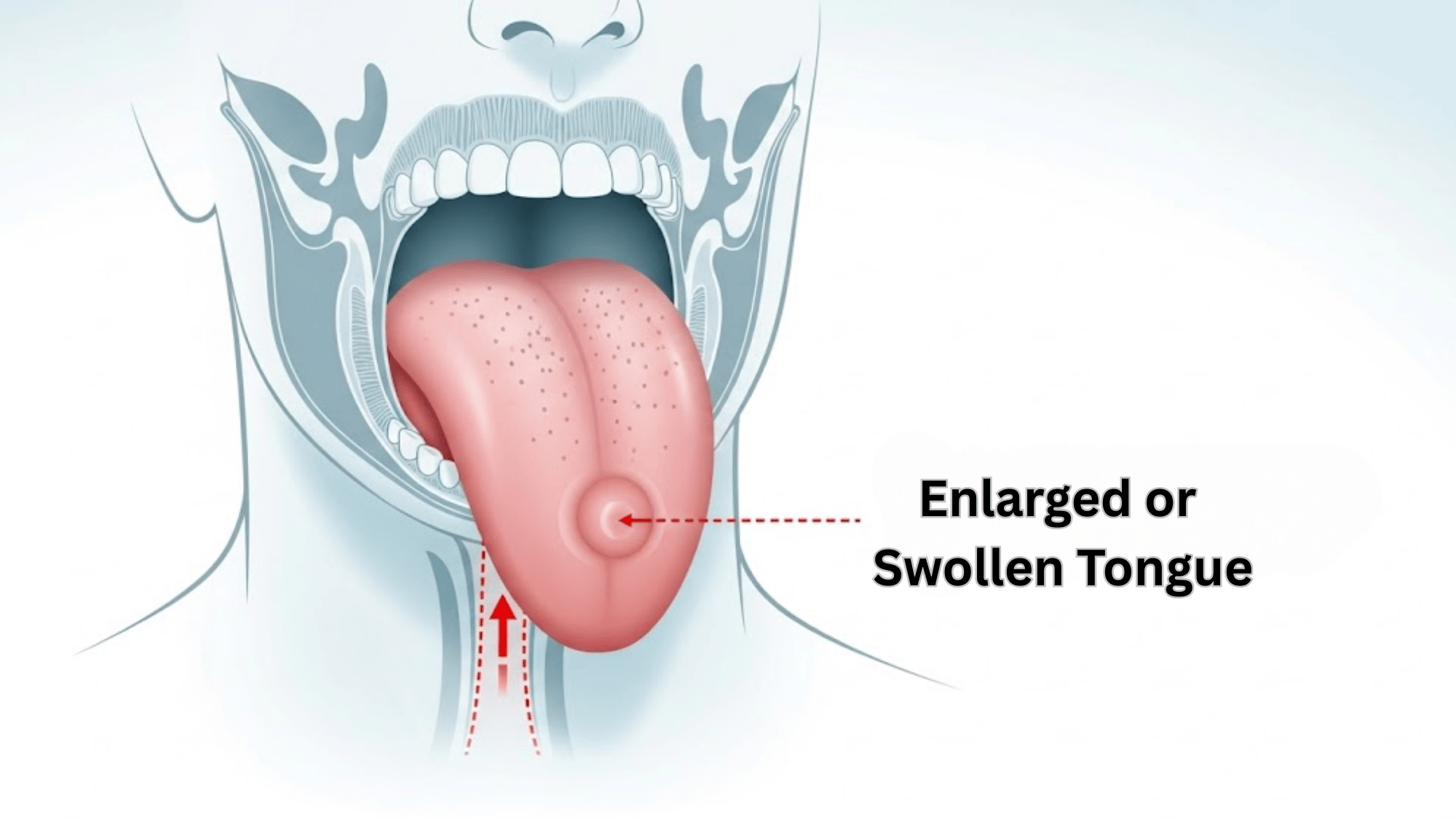
An enlarged or swollen tongue can take up too much space in the mouth, making it harder for air to pass freely during sleep.
This condition, called macroglossia, often leads to snoring and airway obstruction. People with this sign may also feel like their tongue crowds their teeth or sits heavily in the mouth.
3. Puffy or Bulky Tongue Appearance

A puffy or bulky-looking tongue can also be a clue to sleep apnea. When the tongue appears thicker or heavier than usual, it can partially block airflow during sleep.
This may also cause snoring, restless nights, and daytime fatigue. Dentists often notice this sign during routine checkups.
4. Tongue Surface Changes
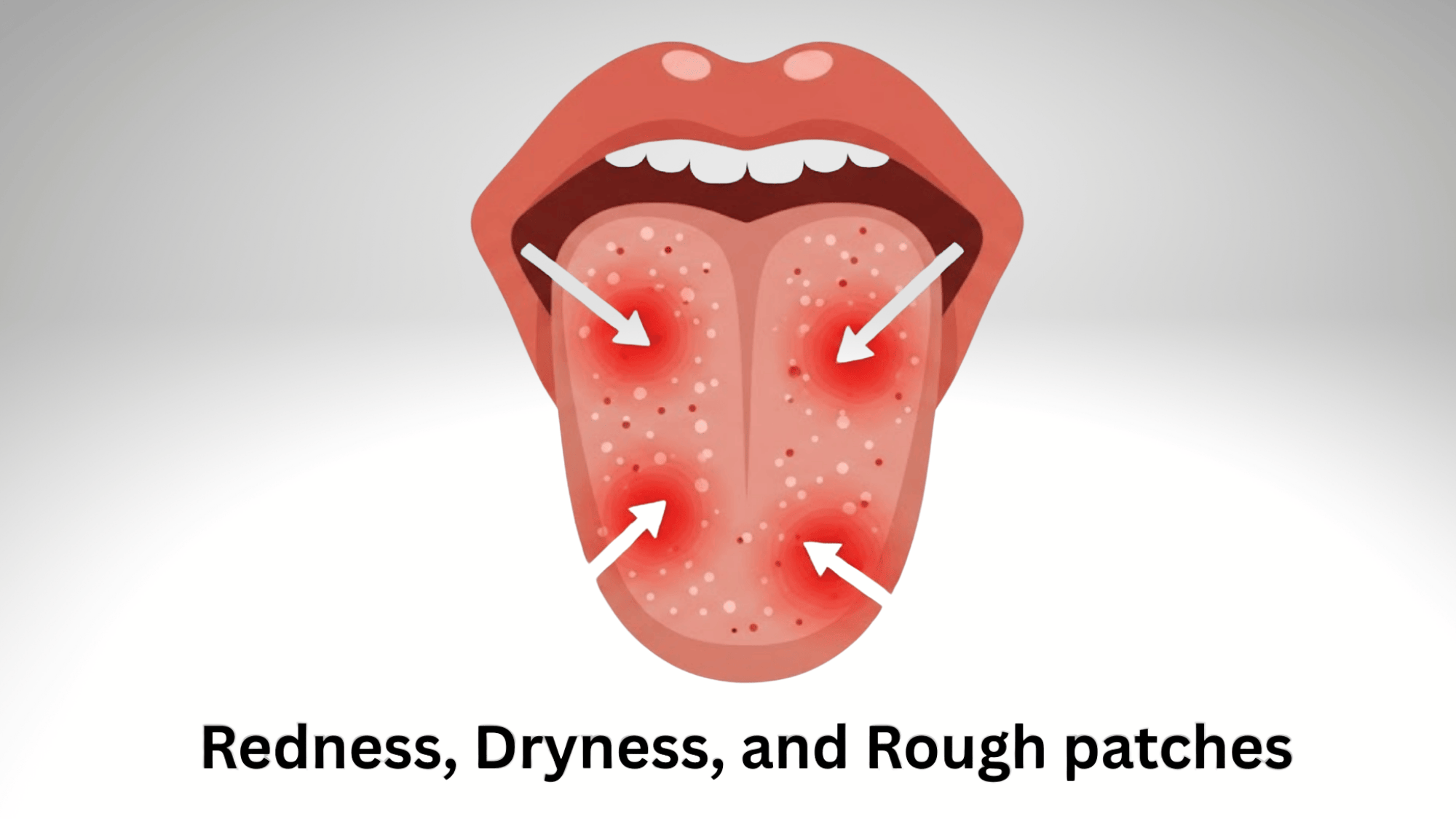
Sometimes the tongue’s surface shows unusual changes, such as redness, dryness, or rough patches. These can happen from constant mouth breathing or the tongue pressing in awkward positions during sleep.
While these changes are not always caused by sleep apnea, they often appear alongside other tongue and oral signs linked to the condition.
Dental and Oral Signs Linked to Sleep Apnea
Sleep apnea often shows itself through small but important changes in the mouth. Dentists are usually the first to notice these signs during routine checkups. Below are some of the most common dental and oral clues that may point to sleep apnea.
Signs Linked to Sleep Apnea:
|
These dental and oral signs don’t diagnose sleep apnea on their own, but they are important red flags. When noticed together, they can guide dentists to recommend further sleep evaluations and help patients get the care they need.
Risks of Ignoring Tongue and Dental Signs of Sleep Apnea
When tongue and dental signs of sleep apnea are ignored, the condition can silently harm both health and quality of life. The table below highlights the main risks and their potential effects:
| Risk | How It Affects the Body | Possible Long-Term Impact |
|---|---|---|
| Heart Problems | Interrupted breathing stresses the heart and raises blood pressure. | Increases risk of heart disease, heart attack, and stroke. |
| Diabetes | Poor sleep affects insulin use and blood sugar control. | Higher chances of developing type 2 diabetes. |
| High Blood Pressure | Oxygen drops during apnea episodes raise blood pressure levels. | It can lead to chronic hypertension and organ strain. |
| Daytime Fatigue | Repeated sleep disruptions prevent deep rest. | Low energy, poor focus, and reduced work or school performance. |
| Mental Health Issues | Lack of quality sleep affects mood and brain function. | Higher risk of depression, anxiety, and memory problems. |
| Reduced Quality of Life | Ongoing fatigue, headaches, and oral discomfort lower daily well-being. | Impacts personal relationships, productivity, and overall health. |
Ignoring tongue and dental signs of sleep apnea can have serious health consequences. Early recognition and proper treatment not only protect long-term health but also restore better sleep and daily energy.
Diagnosis: From Dental Checkups to Sleep Studies
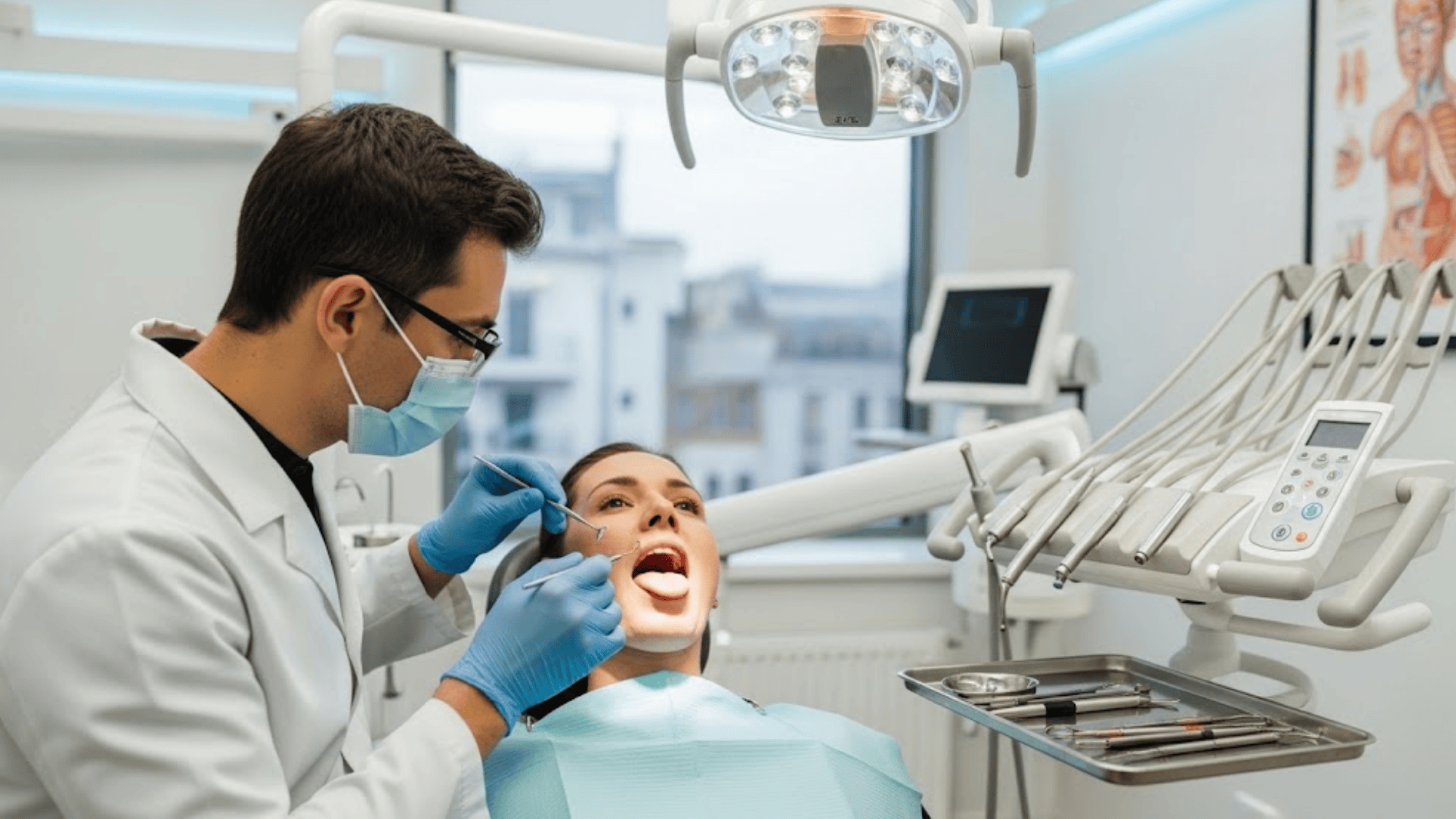
Spotting tongue and dental signs of sleep apnea is only the first step. A proper diagnosis requires medical testing to confirm whether sleep apnea is present and how severe it is. Here’s how the process usually works:
- Dental Checkup Observations: Dentists may notice scalloped tongues, tooth wear, dry mouth, or other oral signs during routine exams. These clues raise suspicion of sleep apnea but are not enough for diagnosis.
- Medical History and Symptoms: Doctors will ask about snoring, daytime tiredness, headaches, or concentration problems. Combining oral signs with personal symptoms gives a clearer picture.
- Polysomnography (Sleep Study): The gold standard test for sleep apnea, conducted overnight in a sleep lab. It records breathing, oxygen levels, brain activity, and heart rate to confirm the condition.
- Home Sleep Apnea Testing (HSAT): A simpler option for many patients, using portable devices to measure breathing and oxygen levels at home. Results help doctors confirm diagnosis and severity.
- Follow-Up and Treatment Planning: Once diagnosed, patients are guided toward treatment options such as CPAP therapy, oral appliances, or lifestyle changes to improve sleep quality and overall health.
Dental and tongue signs provide early warnings, but only sleep studies can confirm sleep apnea. Working together, dentists and doctors ensure patients get the right care quickly.
How to Avoid Sleep Apnea or Reduce Its Risks
Although not every case of sleep apnea can be prevented, there are several steps that can lower the risk and ease symptoms.
Maintaining a healthy weight is one of the most important factors, since extra weight around the neck can put pressure on the airway and tongue.
Sleeping on your side instead of your back also helps, as this position prevents the tongue from falling backward and blocking airflow.
It’s also wise to limit alcohol and sedatives before bedtime because these substances relax the muscles in the throat, making airway collapse more likely.
Strengthening the tongue and airway muscles through simple oral exercises, often called myofunctional therapy, can improve nighttime breathing.
Treating nasal congestion is equally important, since blocked nasal passages encourage mouth breathing and worsen symptoms.
Finally, keeping up with regular dental and medical checkups allows professionals to spot early warning signs, such as scalloped tongues or teeth grinding, and recommend further testing if needed.
Final Thoughts on Tongue Signs of Sleep Apnea
Sleep apnea is more than just loud snoring or restless nights; it’s a condition that can impact overall health if left untreated.
The tongue and mouth often provide the earliest warning signs, from scalloped edges to swelling or dryness. These small but important changes should never be ignored, as they may signal a blocked airway during sleep.
By paying attention to tongue and dental clues, you can take the first step toward better sleep and improved health.
Regular dental visits and professional evaluations make it easier to catch sleep apnea early, before it leads to serious health problems.
If you’ve noticed any of these tongue or oral signs in yourself or a loved one, don’t wait. Schedule a consultation with your dentist or healthcare provider today and take action for healthier sleep and a healthier life.
Have you ever noticed changes in your tongue or mouth while dealing with sleep issues? Comment down below and share your experience!

